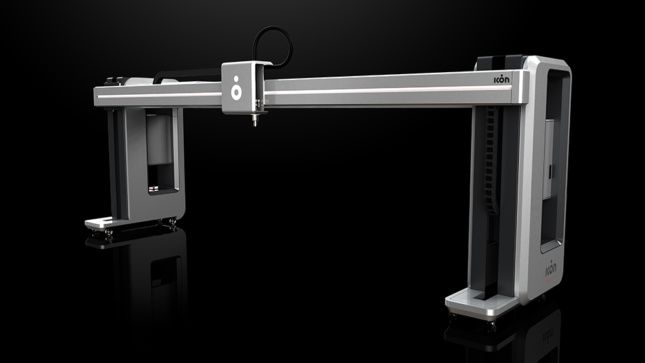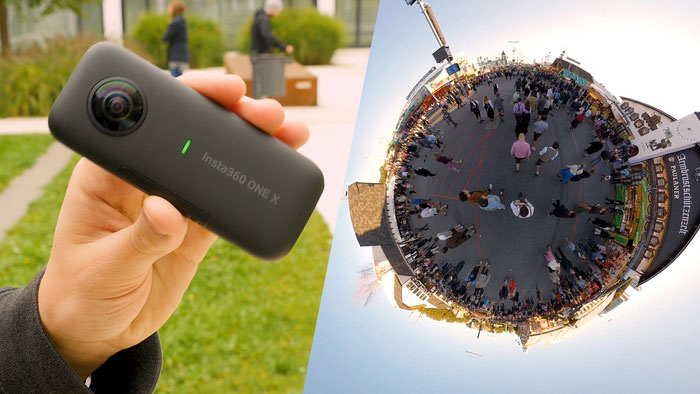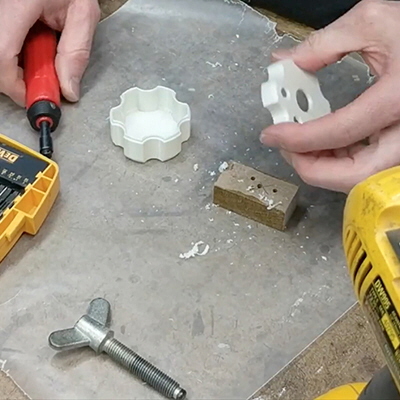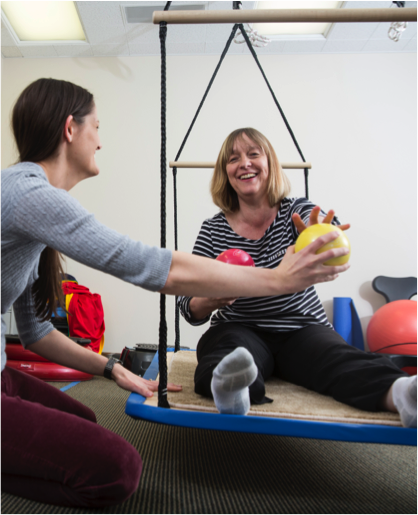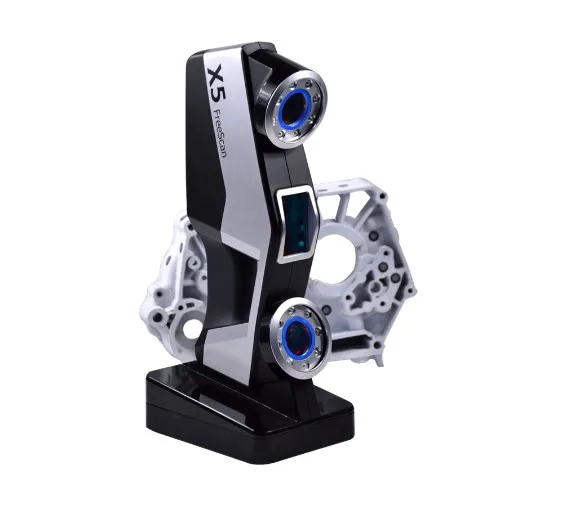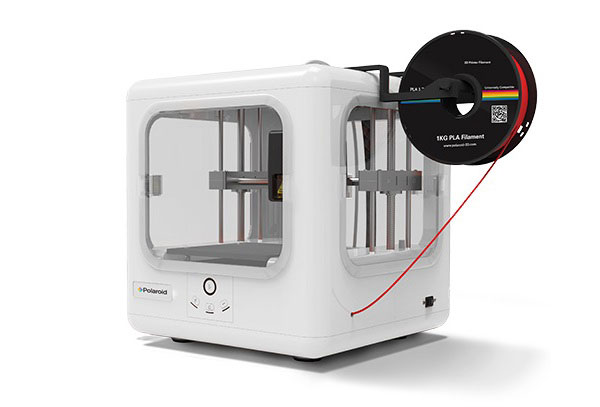Vulcan labs 3d printing
What became of Vulcan Labs: exploring the spin off's role in EOS' 3D printing network
It was the first working day after the Easter mini break, the industry’s biggest user group conference loomed with big news surely to follow, but before that, from seemingly nowhere, two companies spun out of another.
One presented to the world an identity, a new 3D printing process it planned to commercialise, and appraisal from an industry expert to back it up. The other came with a name, an indication towards its origins, a website which to this day has never been updated, and a plea for partners.
Vulcan Labs, the latter of the two, was an independent entity for just more than ten months, its acquirer first opening negotiations in the summer of 2018 and completing the deal by February 2019. It marked the converging of two paths, one trekked by a man and the other by his investments.
David Leigh was half a decade into his career when he established service bureau Harvest Technologies which would eventually be absorbed by Stratasys as it laid the foundations for its Direct Manufacturing business. He assumed the role of VP of Engineering in this on-demand manufacturing business, before moving across to help steer Stratasys’ Emerging Technologies division. It was here where Project Vulcan was born, where some projects remain, where others have fallen away, and where, in the spring of 2018, two were considered ready to go it alone. Stratasys divested from Evolve Additive and Vulcan Labs on the same day. Ahead, Leigh was about to bump into some familiar faces.
In 2009, EOS had struck a strategic partnership with Advanced Laser Materials (ALM), a company Leigh had helped to fund. Two years later, ALM acquired a service provider called Integra, a company Leigh helped to fund and found. And 12 months ago, as Leigh and his team had an eye out for investment, the EOS family was reaching for its wallet yet again.
"EOS knows how to make the car, but they don't drive it."
It was an alliance that made perfect sense for Leigh, who was CEO of Vulcan, whose career had always featured powder bed fusion technologies, and who has spent most of his life in the Lone Star State where all the main characters of this narrative have a residence.
"It was a no-brainer," Leigh tells TCT. "There’s a personal history there, we’re located in Central Texas, about ten minutes away from the ALM office and about 40 minutes from the EOS North America office in Pflugerville, and there’s technical competence. We were actually working on technology that was directly correlated to the P 400.”
The P 400 – or the Integra P 400 to give it its full title – has been task numero uno for Vulcan as it was integrated into the EOS ‘ecosystem’. The machine was officially unveiled two months prior to the acquisition, with the Vulcan team immediately being deployed to help with the development and commercialisation of the product. It has meant the work Vulcan had been doing these last few years has been put on the back burner, as Leigh explains.
“[The P 400] project has absorbed most of our energy and effort. From a practical standpoint, it’s a ‘jack of all trades, master of none’ kind of thing. We could do a little bit of everything and get nothing done or we could focus. We have hit the pause button on what we were working with at Vulcan.”
We have hit the pause button on what we were working with at Vulcan.”
×
Expand
Picasa
EOS NA
EOS' North American HQ in Pflugerville, Texas.
PauseThe Integra P 400 is being marketed by EOS as a machine with advanced capabilities and one that is easily serviceable. It can reach build temperatures of up to 300°C – among the highest temperature ranges yet across EOS’ product range – which has opened customers up to a host of PEK, PPS, polycarbonate and Nylon 6 materials that they haven’t been able to use before. Meanwhile, infrared thermal imaging cameras are a key part of the machine’s real-time feedback loop, helping to monitor and adjust temperatures to reduce deviation in the parts being produced.
It is easy to service for a number of reasons, according to Cary Baur, the Manager of Applications Development, Polymers at EOS North America. Among them is the ability to access the machine remotely – per the users’ permission – assess the issues and advise accordingly. The machine has also been designed so the parts most likely to need maintenance are easy to access – no more pulling out 100 components to fix just one.
The machine has also been designed so the parts most likely to need maintenance are easy to access – no more pulling out 100 components to fix just one.
One new component in the platform is a dual roller, which has been implemented in place of the blade recoater EOS machines typically possess. This new system allows for quicker recoating and the ability to smooth out carbon- and glass-filled materials as well as process softer materials that don’t tend to flow too easily.
Baur explains: “One of those rollers is counter-rotating, so the direction it moves effectively moves your material in a way that’s able to fluff it up and allow it to maintain motion. Our first recoat step is focused on moving the material, the second is flattening it in a way and compressing it in a way that’s repeatable. Those two innovations, as well as the expansion of the temperature range to 300°C, enabled many more materials that haven’t been achievable in the past.”
The Integra P 400 has been in a select number of customers’ hands for nearly six months now.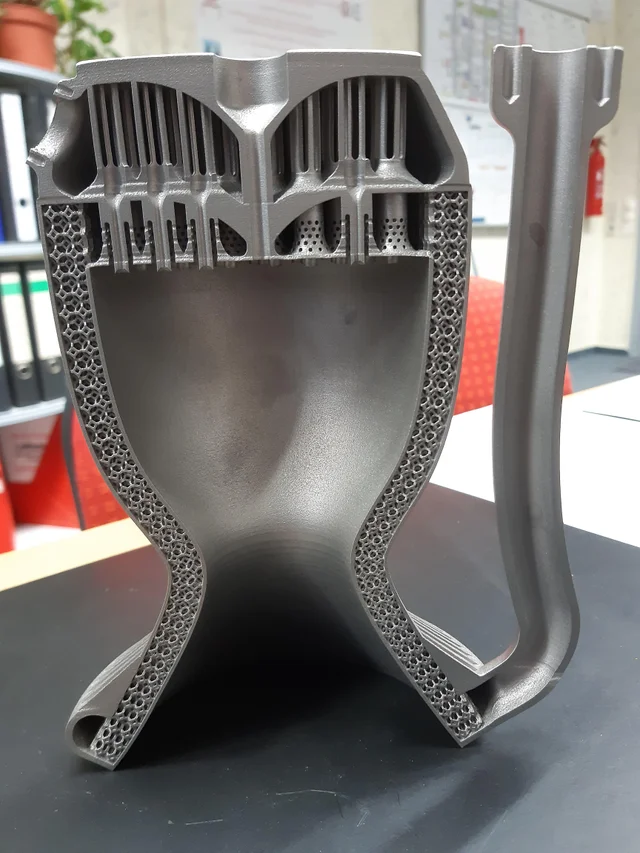 It has been brought to market in response to an urgency from customers to enable the processing of higher-performing materials, taking advantage of the greater mechanical, thermal, and chemical stabilities of the likes of PEK and Nylon 11 materials, to open up application opportunities.
It has been brought to market in response to an urgency from customers to enable the processing of higher-performing materials, taking advantage of the greater mechanical, thermal, and chemical stabilities of the likes of PEK and Nylon 11 materials, to open up application opportunities.
To truly exploit these new capabilities, users are working side by side with EOS through its Additive Minds division, of which Baur manages on the polymer side. The Additive Minds team engages with customers immediately upon the sale of a machine, working to develop custom strategies in order to go from concept to real-life part, and do so based on business cases around the desired production metrics.
While Additive Minds opens a dialogue with users of the Integra P 400, Vulcan Labs is in the background.
“Their role has been to come in and help us drive quality in our production, help us drive best manufacturing practices, install those processes needed to actually serial produce a machine which is something that EOS North America has not done before,” says Baur.
“At their helm is David Leigh, who’s a big name in the market and is helping to drive that organisation in North America. It’s been a great addition that has sped up the timeline tremendously of the P 400 and installed confidence in our customers that we have someone in a team here that is going to be driving that type of reliability.”
×
Expand
EOS
EOS Integra P 400
EOS Integra P 400.
The Integra P 400 is intended to be made available globally as part of the EOS polymer portfolio, but hurdles lie ahead. First, the company needs to achieve CE certification to guarantee it conforms with the health, safety and environmental standards for products sold in Europe. Then, there’s the sizeable task of training an entire global service and support base as production and sales scale, and finally the more tedious one of completing and filing the required documentation.
Next year looks likely, but what’s Vulcan’s job then?
Resume“We see us focusing on the P 400 throughout the fall, but once the fall is done and we’ve launched the product and feel good about it, then we’ll start working on Vulcan,” Leigh picks back up.
What that work entails is ‘primary differentiators.’ The reason EOS has sought to tie Vulcan Labs into its ecosystem is because of similar outlooks on the areas for improvement on powder bed fusion processes, while differing on the angle they’re coming from. Leigh analogises the relationship between Carroll Shelby and Ford Motor Company to churn out the Shelby GT Mustang: “We at Vulcan, we’ve been good practitioners, we know how to drive this car pretty well, but we’ve not made it, and EOS knows how to make the car really well, but they don’t drive it.”
Vulcan has previously spent time looking at how to process metal powders at higher temperatures, has explored the use of harnessing other gases than Argon to operate metal machines at higher or lower pressures, and has considered how to ensure unused powder is recycled and re-used without being exposed to oxygen. Automatically controlling the speed, power and temperature of lasers has also been on the Vulcan agenda, while work on the implementation of automation technologies, to allow for build platforms and the like to be swapped out overnight for example, is another key focus.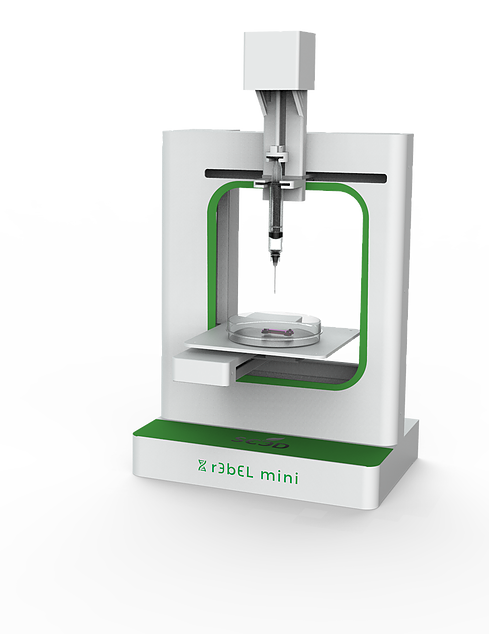
This is just the broad assessment of activities Leigh is able to part with without compromising any of the company’s IP. Vulcan is set to work somewhat as an incubation lab inside of EOS, leveraging its knowledge and expertise to identify and address what can move powder bed fusion technology forward. New materials can lead to new applications, closed loop control can lead to better quality inspection, and more applications produced with better quality will surely lead to growth.
Vulcan will supplement and be supplemented in this mission by the EOS ‘ecosystem’, which includes business units like Additive Minds, the consultative arm; AMCM, the customised machines division; AM Ventures, the investment group bringing innovative start-ups into the fold; and Life Cycle Solutions, the aftermarket support unit.
×
Expand
EOS
Team Vulcan at EOS.
Team Vulcan at EOS.
In fact, collaboration between Vulcan and some of these groups is already well under way. Additive Minds and AMCM have recently worked with clients to reduce the build volume of their M 290 platforms because they were generally not using it to full capacity. Hearing from more and more customers that this new modification of the product would be of interest to them, Vulcan has been assisting the teams as EOS prepares roll this out globally.
There will be much more of this. Leigh likens it to developing a new braking system for one of those Shelby GT Mustangs he referenced and upgrading the car months or years after the sale. In the 3D printing landscape, that might be new laser technology or automated scanner calibration. Vulcan will be one of the teams deployed to do much of the groundwork in developing these new capabilities, before handing off to Life Cycle Solutions to install them.
"We’re starting to slightly influence some of the product development at EOS.
"
The ecosystem is in full flow. It receives around $1m a week for technology R&D, is integrating around ten new start-ups per year, and is pencilled in to be the lasting legacy of EOS founder Hans Langer. Vulcan Labs is now among the componentry of this network, complementing the offering of Additive Minds, Life Cycle Solutions, AMCM and co, to provide enhanced support to its customers.
It is likely Vulcan will do so without external recognition. As Langer told TCT earlier this year, customers aren't all that concerned with what goes on in the background, who did what and how or why: "‘Give me this part for this price, I don’t care how you do it,’” he imitated, and so there's less inclination to put the acquired company's brand on product output.
Vulcan is playing a team game now, performing to the order of a vast network that operates across the world. Not every detail of each bug the unit fixes, or each technical breakthrough the unit achieves, will be made public, but make no mistake, Vulcan is contributing.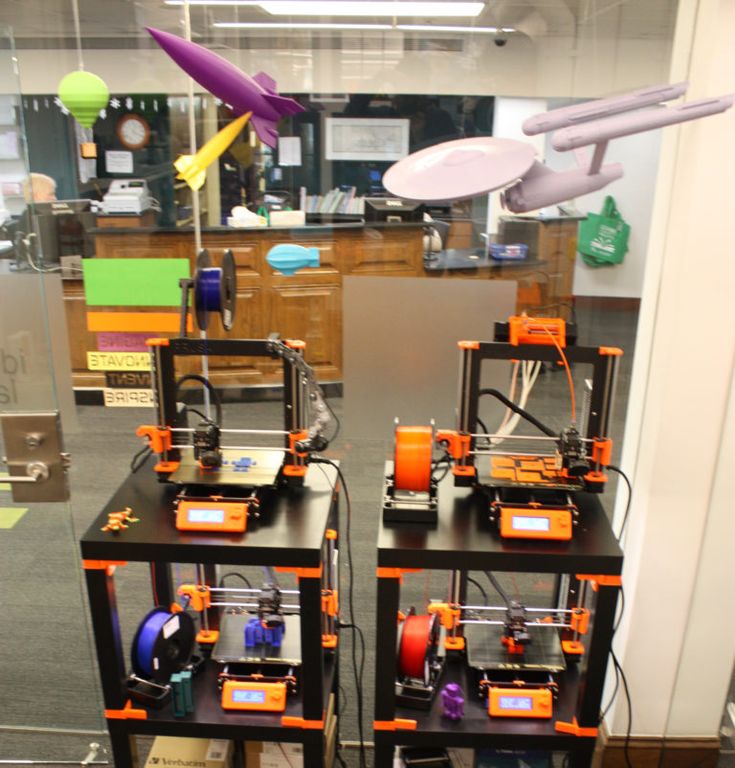
“We’re starting to slightly influence some of the product development at EOS by travelling over there and working with them,” Leigh divulges. “We will probably have one or two unique solutions, that may [or may not] be transparent to the customer that came from an idea from Vulcan.
“A lot of things that we were working on will probably work their way into the ecosystem without having a label to say, ‘this is made by Vulcan’. It won’t have a badge. We’re all one group, we’re working on independent things that hopefully can be scaled within the group. The P 400 as an example, our goal is to produce x number per year. If we get to 10x, if we need to produce ten times what we can do here in Pflugerville, more than likely we will leverage the global procurement and global logistics. Who knows, it may end up being a great platform for Asia and we decide to then launch an Asian-specific manufacturing centre.
“AM is going global, EOS is now becoming more of a global company than just a Bavarian company, and we’re starting to grow up and act like that.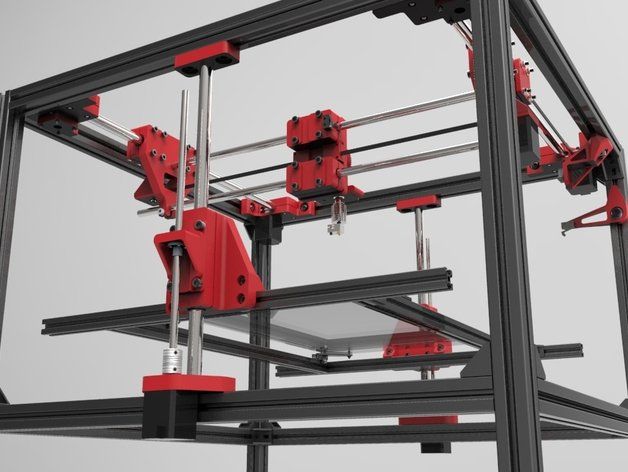 ”
”
Growth continues at EOS with acquisition of Vulcan Labs
Pflugerville, TX, February 5, 2019 - EOS, the world's leading technology supplier in the field of industrial 3D printing of metals and polymers, announces its acquisition of Vulcan Labs – expanding its bench of additive manufacturing (AM) experts in powder bed fusion technology. The new Vulcan Labs team members bring decades of industry experience into both EOS' technical center in Pflugerville, Texas, and its ALM materials research and production facility in Temple, Texas, further strengthening its ability to ensure customer success in industrial 3D printing.
“Additive manufacturing is advanced manufacturing and it is not as easy as simply pushing a print button. With that sophistication, our job becomes helping ensure our customers are productive and successful, and that sometimes requires non-standard solutions, customized to very specific applications," said Glynn Fletcher, president of EOS North America. “With this acquisition of top AM industry talent, we have now formed an entirely dedicated engineering services group solely focused on these types of requirements."
“With this acquisition of top AM industry talent, we have now formed an entirely dedicated engineering services group solely focused on these types of requirements."
Source: EOS
EOS North America and the Vulcan Labs team
In addition to the new engineering services group, other former Vulcan Labs engineers have been charged with helping lead the further development and commercialization of the new Integra P 400 polymer 3D printer – a flexible and easily serviceable platform designed for the production of high-quality, mid-temperature AM applications. Launched in December 2018 and currently available only in North America, the Integra P 400 is engineered and manufactured in Texas and has already seen orders from nearly a dozen organizations.
Former Vulcan Labs CEO and industry veteran, David Leigh, will now serve in the role of chief operating officer at EOS North America. “The time is perfect to join EOS and Vulcan Labs," said Leigh. “Industrial 3D printing is still relatively new, but it has moved from the theoretical to the practical. As organizations wrestle to integrate AM into their production chain, industry-leading experts like EOS are what will make the difference between struggle or success. That success requires a stable of experts and a robust ecosystem of partners. Vulcan Labs augments existing EOS know-how and sets us apart bringing unique, high-value solutions to our customers."
“The time is perfect to join EOS and Vulcan Labs," said Leigh. “Industrial 3D printing is still relatively new, but it has moved from the theoretical to the practical. As organizations wrestle to integrate AM into their production chain, industry-leading experts like EOS are what will make the difference between struggle or success. That success requires a stable of experts and a robust ecosystem of partners. Vulcan Labs augments existing EOS know-how and sets us apart bringing unique, high-value solutions to our customers."
With this acquisition, we have frankly struck the AM talent jackpot. It is rare, indeed, to find such a pool of top technical talent that can immediately bring value to our customers at such a high-level. This acquisition illustrates our commitment to providing the best support for our customers, while continuously challenging the market through internal and external disruption."
Glynn Fletcher, president of EOS North America
EOS is the world's leading technology supplier in the field of industrial 3D printing of metals and polymers. Formed in 1989, the independent company is pioneer and innovator for comprehensive solutions in additive manufacturing. Its product portfolio of EOS systems, materials, and process parameters gives customers crucial competitive advantages in terms of product quality and the long-term economic sustainability of their manufacturing processes. Furthermore, EOS customers benefit from deep technical expertise in global service, applications engineering and consultancy.
Formed in 1989, the independent company is pioneer and innovator for comprehensive solutions in additive manufacturing. Its product portfolio of EOS systems, materials, and process parameters gives customers crucial competitive advantages in terms of product quality and the long-term economic sustainability of their manufacturing processes. Furthermore, EOS customers benefit from deep technical expertise in global service, applications engineering and consultancy.
.docx
Press Release: Vulcan Labs
Source: EOS
Original
337,1 KB
.jpg
EOS North America and the Vulcan Labs team
Source: EOS
Original
110,9 KB Big
63,6 KB Web
63,6 KB
3D printing in Moscow at the 3D printing laboratory
Application of 3d printing
Gaining popularity and being in great demand, 3D printing on order is becoming an integral and indispensable part of life in our time.
The manufacture of cases and volumetric products is a very profitable solution when small-scale production is spreading.
Layer-by-layer material growth technologies (or fabber technologies) for creating physical objects came to Russia not so long ago, but their popularity is growing rapidly. Performing 3D printing - in Moscow or in any other city - is not a problem today. Products for various purposes - from prostheses to parts for cars and aircraft - can be made on the basis of the fabber method. nine0005
The term “additive manufacturing” is accepted in industry guides, however, this technology has become commonly referred to as “3d printing” and it is in this version that it is used in the startup environment, between entrepreneurs and journalists.
Layer-by-layer build-up is applicable both for creating prototypes, prototypes of a future product, and for direct manufacturing of parts and solid objects.
Where is a 3d printer used
In what case may 3D printing be required? At the stage of product development, when it is required to visualize it and determine the likelihood of defects or unsatisfactory quality during production.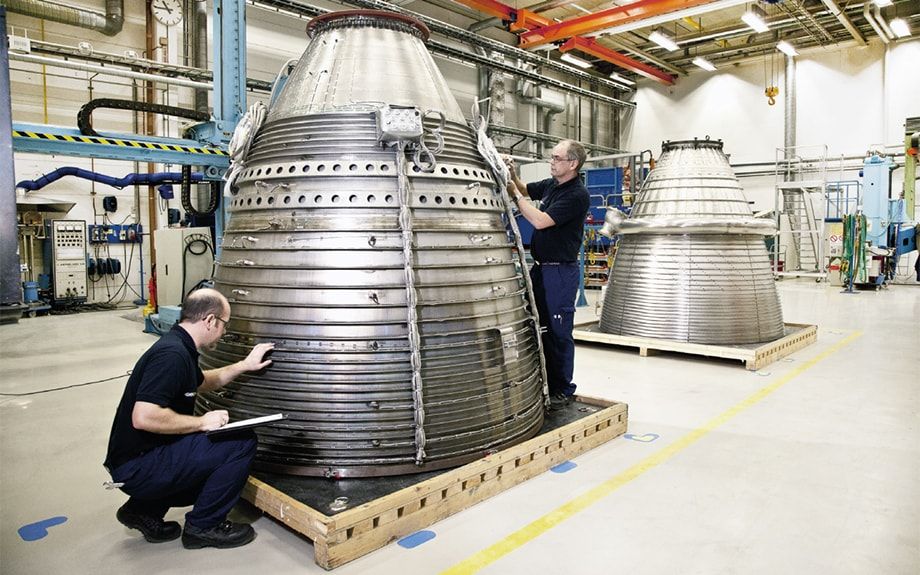 It is also in demand for creating prototypes of architectural objects, as well as for prototyping. nine0005
It is also in demand for creating prototypes of architectural objects, as well as for prototyping. nine0005
Prototyping of parts, production of tooling - for example, molds for casting; assembly tools - this is not a complete list of cases when they decide to use 3D printing on order. Moscow in this regard is in a much more advantageous position compared to other Russian regions, since ideas and technologies, for the most part, are concentrated here.
We use additive technologies and high-quality materials to make your models, which will then be presented in many industries after printing: medicine, science and education, architecture and construction, energy and oil and gas industry, automotive and mechanical engineering, aerospace industry, jewelry manufacturing . nine0005
3D printing, ordering the release of a single item or a series is possible only on the basis of three-dimensional modeling based on special software products - this is where work on a separate project begins.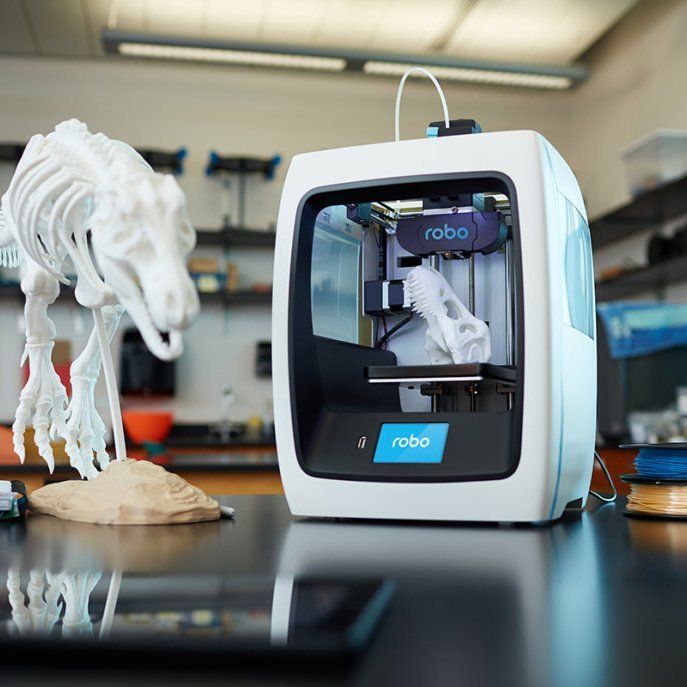 If you want to create a copy or form of an existing object, you will need to apply three-dimensional scanning.
If you want to create a copy or form of an existing object, you will need to apply three-dimensional scanning.
The principle of operation of a 3d printer
Ordering 3d printing means placing an order for the reproduction of a digital three-dimensional model of an object in physical form by horizontal layering of a substance. Layering is carried out using additive installations or three-dimensional printers, the variety of which is quite large today. nine0005
For each of the layering methods, including lamination, fusion, sintering, extrusion, jet spraying, UV curing, there is a separate category of devices. To create an accurate three-dimensional geometric product (3d model) that can perform any function, "3D printer" is used - this is the general name for a whole family of equipment capable of performing 3d printing on order (Moscow). At its core, each device is a numerically controlled machine that performs layering operations. nine0005
To reproduce the desired objects, it is necessary to use different 3D printing technologies that differ from each other.
Here are the main 3D printing technologies:
- Fused deposition modeling (FDM). ABS and PLA printing with this technology is the most popular of all 3D printing technologies. It is used in most desktop 3D printers and represents an ideal price / quality ratio, which allows printing by layer-by-layer supply of a filament of molten plastic; nine0038
- Laser stereolithography (SLA). Photopolymer printing using SLA technology allows you to form an object by layer-by-layer laser exposure of a liquid photopolymer resin, which hardens under the influence of radiation. One of the variations of this technology is DLP 3D printing. It uses a special projector instead of a laser. Both 3D printing methods are used to create objects with a high degree of detail. In the case of DLP printing, speed is also an added advantage; nine0038
- Selective laser sintering (SLS). Reproduction is performed by layer-by-layer melting of a special powder under the action of laser radiation.
 This 3D printing method is widely used in the industry for the manufacture of durable metal elements.
This 3D printing method is widely used in the industry for the manufacture of durable metal elements.
To order printing on a 3d printer using any of the above methods, you must select the material in which the product will be made. What will be the composition of the product, such will be the cost of the work. nine0005
Printing on a 3D printer is possible using powder forms of gypsum, polystyrene, polyamides, metal alloys; liquid photopolymers, wax and other materials. The specific task and requirements for the final product depend on which consumables are selected. It is important that with this production method, whatever you choose, there is almost no mechanical post-processing required.
In order to understand the principle of 3D printing, it is necessary to reproduce the step-by-step process of creating models. nine0005
Let's describe some stages of 3D printing:
- 3D modeling of the required object according to the specified parameters;
- loading a file with a digital model into a slicer program that generates a control code for a 3D printer;
- setting the required 3D printing parameters;
- writing a code to a removable memory that connects to a 3D printer;
- 3D model reproduction.
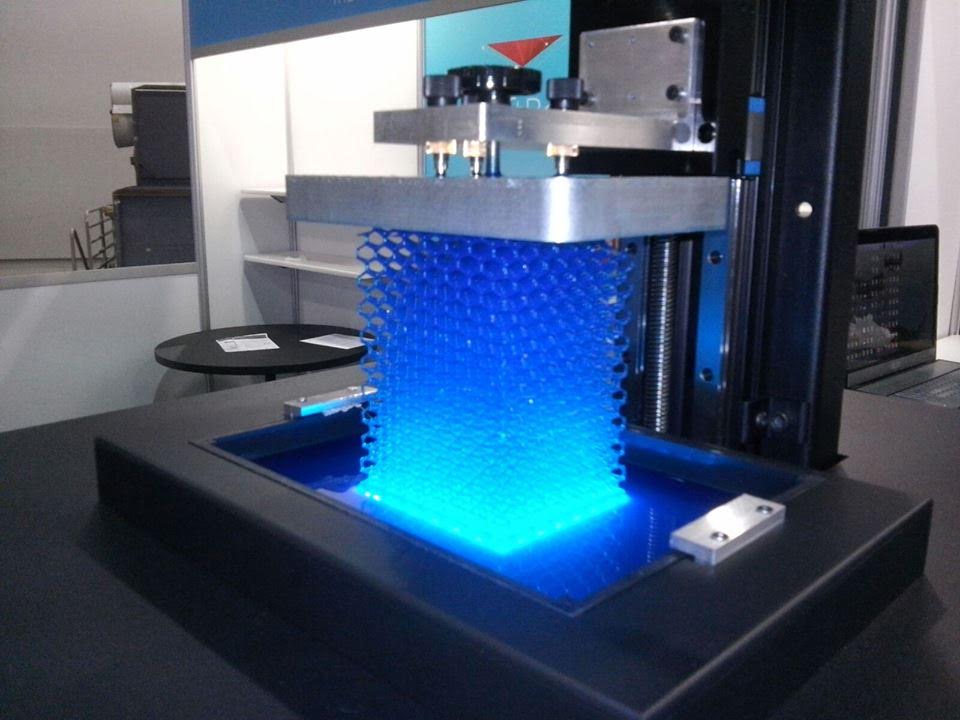
Objects are reproduced progressively in the desired shape, the selected material is applied layer by layer, forming the finished product. nine0005
The possibilities of 3D printing are almost limitless, that is, you can make anything you want and this is a huge advantage of this type of printing. In some technologies, for very thin overhanging elements, supports are provided, thanks to which, sagging can be avoided.
Such a brief description of the stages, where there is no ready and detailed analysis of the complete picture of the 3D printing process, gives only an idea of the essence of the technique.
What equipment does LAB3DPrint 9 have0003
Due to the fact that 3D printers are quite expensive equipment, and not everyone can use 3D technologies, but there is a need, our company provides printing services quickly, efficiently and in accordance with your wishes, will complete your task.
The high speed and accuracy of printing, as well as the maximum reliability of our 3D printers, reduce the cost of all types of 3D printing.
We can order a full range of preparatory work and the actual printing on a 3D printer (Moscow) using various methods and materials. We have all the necessary equipment and software. nine0081 Our company works with professional equipment, so the quality of the finished product is guaranteed and the result exceeds all expectations.
In the case of infrequent 3D printing, there is simply no point in purchasing expensive equipment, and the only thing you can do is entrust the creation of any object to us. When you need to print various products, for example, a part made of photopolymer or Abs plastic, you can safely use the services of our company by contacting the site where delivery and payment are processed. nine0005
Benefits of Lab3DPrint
Our company provides 3d printing services, creating industrial design items, product prototypes, functional models, layouts, souvenirs and many other objects from sketches and drawings.
Depending on what device and what printing material is used, these will be the cost and turnaround time.
Our staff will help you navigate and make the right choice, as well as take care of the calculations after receiving a file with information about your model. nine0005
You only need to describe your task in detail, and we will select the optimal technology and materials for its implementation.
To do this, when placing your order, you must fill out a special form on our website. Here you can also ask questions regarding the production of 3D models.
Write to us and we will be glad to cooperate!
Who are 3D printing designers in construction
By 2025, the construction industry will produce up to 2.2 billion tons of waste annually. 3D printers can solve the problem, which allow you to build houses with little or no waste. We tell who organizes their work
What is a building 3D printing designer
A building 3D printing designer is an architect who creates buildings using 3D printers. He selects materials and develops the forms of future houses, taking into account the needs of the customer, location and climate.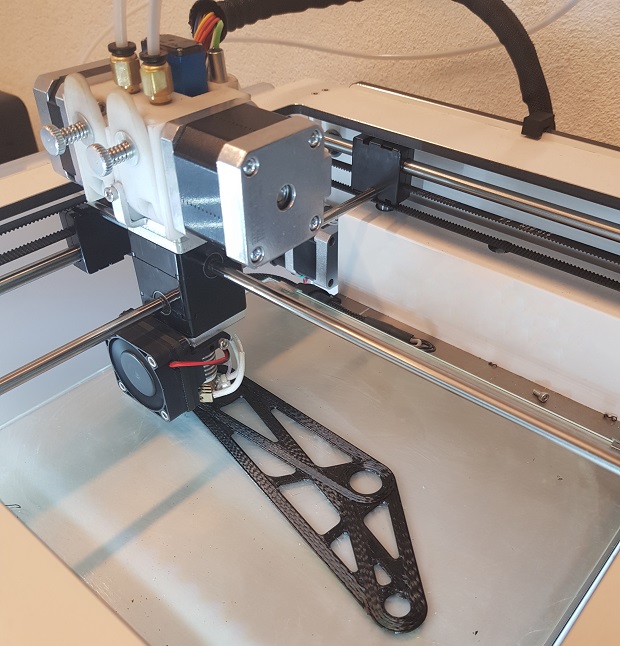 The specialist models the project in the program, and then the machines print it in full size.
The specialist models the project in the program, and then the machines print it in full size.
Today, 3D printed houses are popping up all over the world. For example, they are in the UAE, the Netherlands, Italy, China, Mexico and even Russia. Research shows that 3D construction simplifies supply chains, design, and makes the whole process more efficient and greener. nine0005
3D printing designer in construction is one of the professions of the future that RBC Trends collects in a separate selection. To find out who will be in demand in 5-10 years, follow the link above.
Printing an eco-friendly house from natural materials in Italy
(Video: 3D WASP / YouTube)
What does a 3D printing designer do in construction
The main task of such a specialist is to take into account and organically combine the possibilities of modern 3D printing natural terrain restrictions and customer desires. nine0005
First of all, the designer needs to decide how the building will be erected.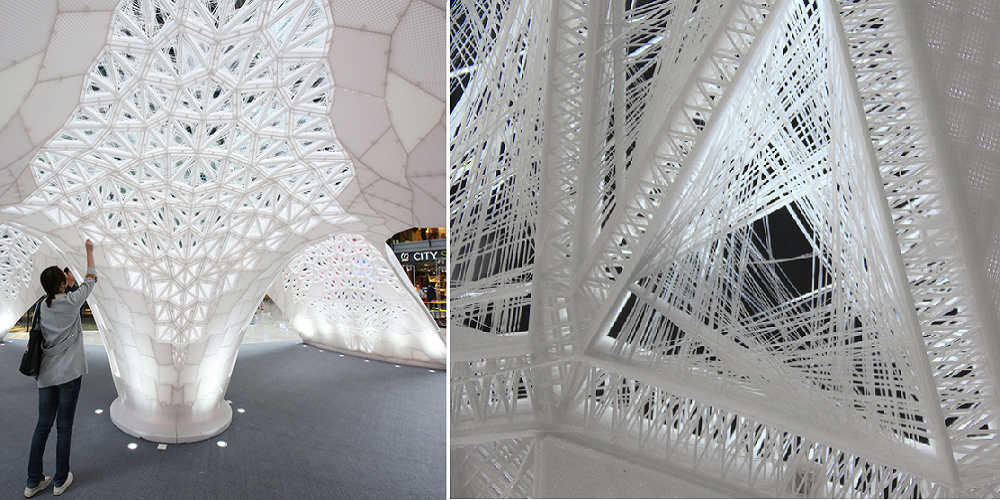 It depends on the plans of customers and logistics. For example, walls and individual parts of a house can be printed separately, and then the finished elements can be assembled together at the construction site. Another option is to place the printer right on the spot and "grow" the house from scratch.
It depends on the plans of customers and logistics. For example, walls and individual parts of a house can be printed separately, and then the finished elements can be assembled together at the construction site. Another option is to place the printer right on the spot and "grow" the house from scratch.
In addition, 3D printers are filled with various "inks" to build houses. These can be eco-friendly bioplastics, various mixtures of natural raw materials such as clay combined with rice husks or fiber-reinforced concrete. The availability of materials and their stability in different environmental conditions will influence the choice of the designer. nine0005
When everything is decided with the approach and building materials, the specialist needs to draw the project in 3D modeling software and program the printer. After that, the construction itself begins, which must be controlled at different stages.
Transport of 3D printed building modules (Photo: SOM)
Required Skills
Engineering or architectural education is a necessary basis for working in the profession.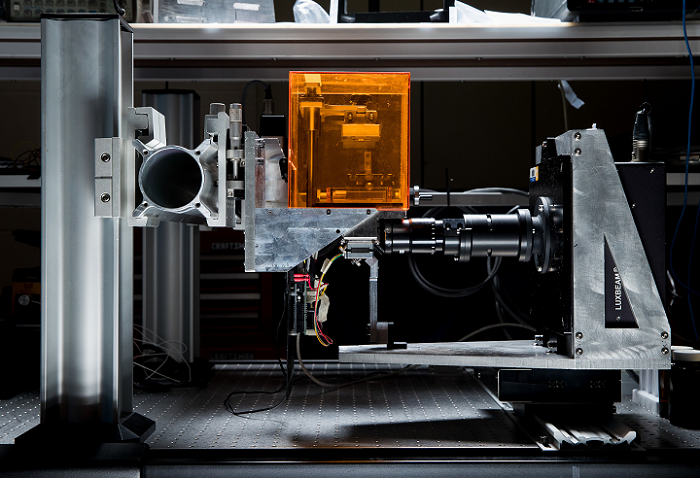 Also, a 3D printing designer in construction needs to be able to handle modern modeling programs and techniques. At the same time, such a specialist cannot do without “flexible” skills.
Also, a 3D printing designer in construction needs to be able to handle modern modeling programs and techniques. At the same time, such a specialist cannot do without “flexible” skills.
- 's customer focus is essential to interacting with customers as effectively as possible.
- Project Management is useful for tracking deadlines and planning the construction stages correctly. nine0038
- Lean Skills and Green Thinking will help you choose economical and environmentally friendly approaches and materials.
- Systems thinking and cross-industry communication skills will be useful in organizing processes and work of different contractors.
Trends and professions
The use of 3D printing technologies in construction allows you to get rid of many problems of modern development. Therefore, we should expect that it will be increasingly integrated into our lives. nine0005
nine0005
The amount of waste generated by the construction industry will grow to 2.2 billion tons by 2025, according to the Construction Waste Market. 3D construction often uses local natural materials and generates little to no debris.
In the United States, according to the Department of Labor, up to 15 workers die every day as a result of work-related injuries on construction sites. Automation and the maximum use of robotics can significantly reduce human losses in the development industry. nine0005
3D printed houses could be a solution for fast construction in case of natural disasters. Modern devices are able to create 1 m2 of wall in just five minutes. At the same time, some printed buildings withstand earthquakes of magnitude up to 8 points.
Where and when did the profession come from
The first version of ArchiCAD 3D modeling software appeared in 1984. Two years later, the first patent for a 3D printer was filed. The more perfect these technologies became, the more opportunities they gave to the world.